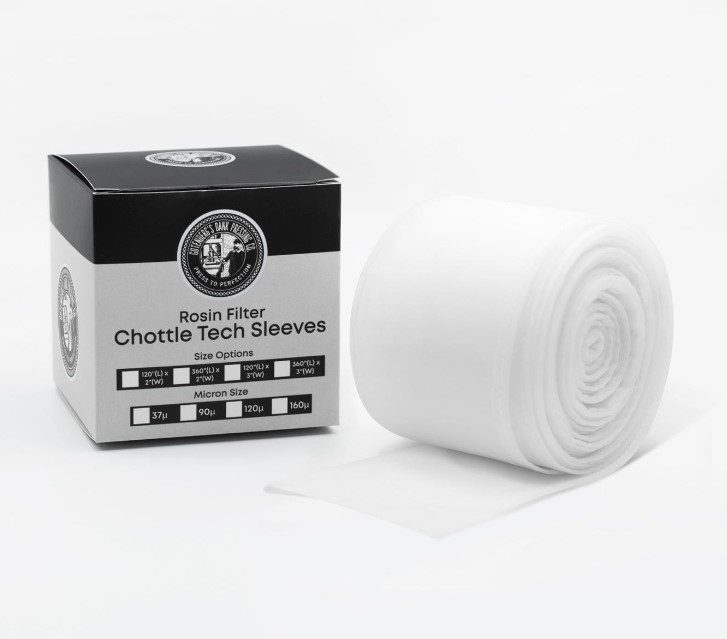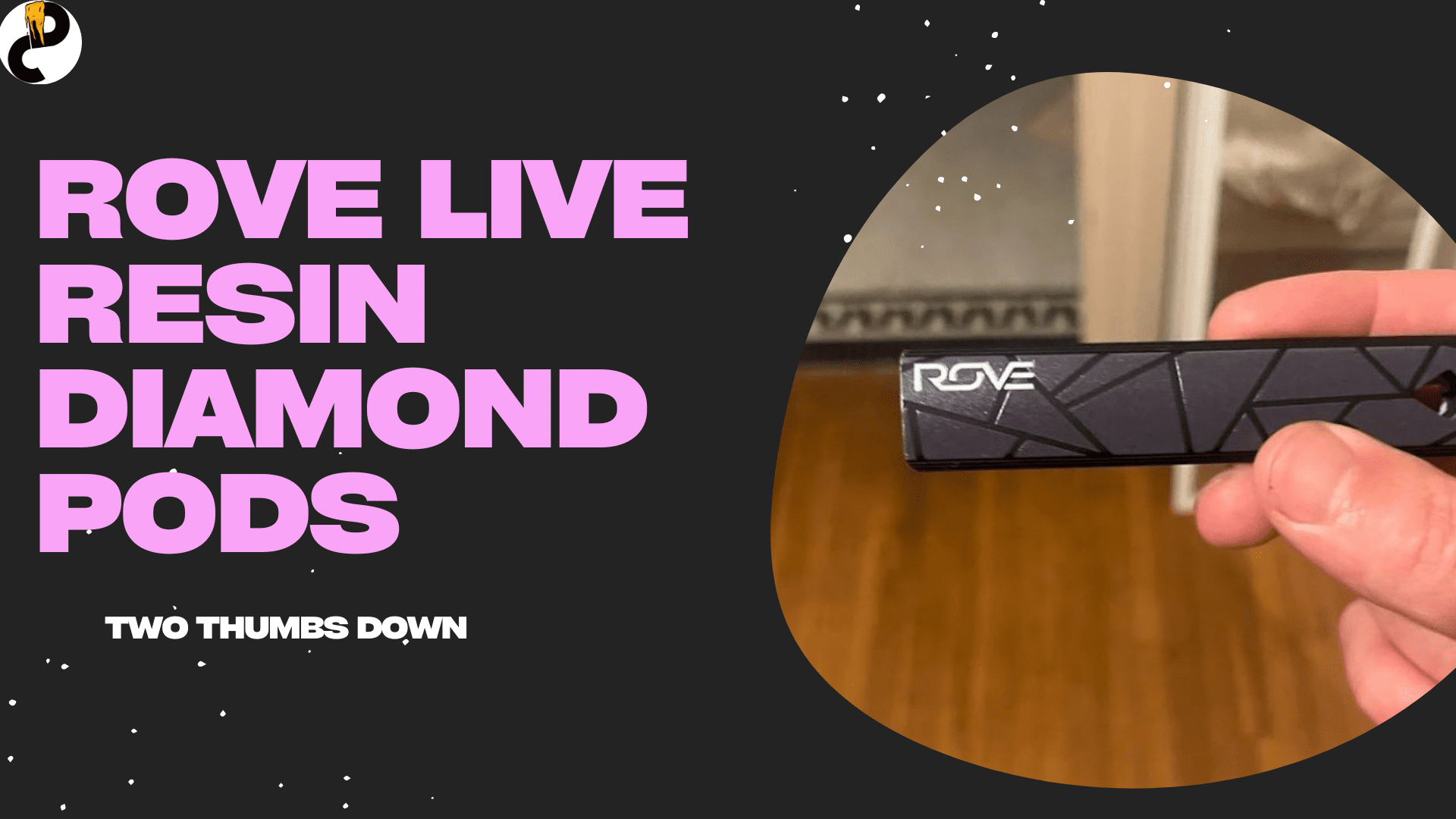The Different Styles of Rosin Pressing

Rosin is a type of solventless cannabis concentrate, which means that it doesn’t require the use of solvents to extract the THC and other cannabinoids from cannabis flowers. Rosin can be extracted using a combination of heat and pressure. The end product is a sticky, viscous substance that ranges in color from yellow to dark brown and can be consumed like any other concentrate.
What is Rosin Pressing
Rosin pressing is a technique used to extract cannabinoids and terpenes from raw plant material. This process is accomplished with a rosin press, which uses only heat and pressure to separate the end product (rosin) from the source material. Rosin is highly concentrated, and THC levels can easily rise upwards of 60%.

There are different styles of rosin pressing, and it all depends on your method of packing the source material into the rosin bags and the placement of the rosin bags between the plates of the press.
The three most popular styles of rosin pressing include:
- Traditional Flat Pack Style
- Bottle Tech Style
- Chottle Tech Style
Traditional Flat Pack Style
Traditional flat pack or pillow-style rosin pressing is the most common and easiest to use. It’s a great way to be able to extract your resin quickly without having to use a lot of material. The traditional Flat Pack style is recommended for pressing dry sift or bubble hash. However, if you’re pressing flower rosin, Bottle Tech or Chottle Tech are the ideal options.
How to press Traditional Flat Pack Style
- Prepare your rosin bags: Ensure the seams of the rosin bag are on the inside. If the seams are facing the outside, flip the bag inside out. This generally increases the bag’s overall strength and durability under pressure, reducing the amount of rosin that will get trapped in the bag’s seams.
- Evenly pack the rosin bags with the starting material. If you are using cannabis flowers as your source material, make sure to remove all the stems. The buds should be a compact size that can be molded together to form a solid mass. You want to pack the bags loose enough to be laid flat but not too loose to have empty spaces. Leave at least .5 inches at the top of the bag. Once you fill the bag, use your finger or a jamming tool to compress the source material into the bottom corners gently and evenly across the bag’s edges. You must avoid any space in the bag and ensure the packing is uniform.
- Close the top of the bag with a fold. Fold over the excess material at the top of the bag, so it remains secure during the pressing process.
- Line the rosin press plates with parchment paper before putting your rosin bags on them for pressing. The parchment paper will catch the rosin squished out of your buds.
- Place the bags lying down between the plates in a horizontal position. A 2×4-inch rosin bag laid down horizontally between the plates takes up a surface area of about 8 square inches.
- Heat your plates and begin the press. Continuously increase pressure to the press. Avoid letting the press sit for a while in between increasing pressure as this causes burnt terpenes, blockages in the rosin bags or blowout.
Bottle Tech Style
Bottle Tech Style (BTS) for rosin pressing is a technique in which rosin bags are filled and placed vertically instead of the standard horizontal position used in the traditional Flat-Pack style. The vertical positioning allows more space to press multiple bags on the press in one go. This method will enable extractors more control over pressure for consistent results. Bottle Tech Style is not recommended for pressing kief, sift, or hash. Pressing rosin bottle tech style is recommended for pressing flower.
How to Press Bottle Tech Style

- Prepare your rosin bags. Prepare your BTS rosin bags by ensuring the seams of the bags are on the outside. Use a wooden toothpick or something similar to poke the bottom corners of the rosin bag inwards until a point is reached that resembles a V shape. The two lower corners should overlap each other on the inside. (We recommend using rosin bags specifically made for Bottle Tech Style. These bags are stitched on the sides instead of the usual stitching on one side and the bottom. This ensures the even flow of the resin when pressed.)
- Pack your starting material into the bags. Ensuring the bottom corners remain in place, carefully and firmly fill the bag with your nugs. Make sure to use small to medium nugs and altogether avoid stems; there should be zero air pockets.
- Seal the bag. Clip off any extra material at the top, leaving approximately 0.5 inches. Make four folds to form a uniform jacket similar to how you would gift wrap.
- Line the rosin press with parchment paper, making it easy to collect the rosin and avoid a mess.
- Load the bags vertically onto the press plates. Note that the taller your pack is, the less even your melt will be, as heat will not be evenly distributed. Pressing 3.5 grams of flower at a time in 2×4 inch bags is a recommended amount.
Chottle Tech Style
Chottle Tech Style for rosin pressing is a unique technique that is very popular because it saves a lot of time. The Chottle Tech Style is unique because you will need to snip off the bottom of the rosin bag to create a tube. This reduces the folds in which rosin can get trapped and maximizes yield. In addition, the Chottle Tech Style allows for better control over pressure resulting in even more quality and consistent end product.

How to Press Chottle Tech Style
- Prepare your rosin filter sleeve. To begin pressing flower rosin using Chottle Tech Style, cut the bottom part of your rosin bag so it resembles a tube. We recommend using the Chottle Tech Rosin Filter Tube as it only has a single stitched side and is open on both ends.
- Pack your source material into the tube. Place one end of your Chottle Tech Rosin Filter Sleeve on a flat surface upright. Press firmly with your thumb to push down the buds into the bottom of the tube; make sure to avoid any air pockets (Tip: Your buds should ideally be medium size, be free of stems, and have an appropriate humidity level (about 62%)).
- Line the rosin press plates with parchment paper before placing your rosin bags on them for pressing. The parchment paper will catch the rosin squished out of your buds.žPlace the bags on the press plates. Once the plates have been set up with the parchment paper, place the tightly filled rosin bags onto the rosin press plates. Make sure the bags are vertically upright.
- Heat your plates and begin the press. The duration of the press depends on how much starter material is used. For example, a 7 gram takes about 2-3 minutes
Important Points to Consider for a Successful Rosin Extraction
Rosin Bags
It is essential to choose suitable rosin bags. The micron size of the bag will give you a significant influence on your final item quality. The higher the microns will be, the more likely it is that quality will be compromised. We recommend using 37µ, 50µ, 75µ, 90µ, 120µ, 160µ, or 220µ microns.
Use 90µ or lower for finer material like dry sift or bubble hash. Then use 90µ or higher for flower material. The lower the micron, the lower yield you will produce, but the quality will be higher as less plant material flows through the rosin bag and into your end production (rosin).
The Humidity of the Source Material
Ensure the source material is adequately humid with about 60% to 70% relative humidity. If the material is too dry, the terpenes will burn during the pressing process, which means less yield. If the material is too wet, the rosin will likely be runny and produce a reduced yield. To increase the humidity of your flower, you may use terracotta humidity stones or a humidity pack.
Pressure
You want to make sure you apply pressure correctly. How you apply pressure to your rosin press could make all the difference in the end product. First, apply minimal pressure that is enough to hold your rosin bag in place. Let the bag sit on the heated plates for 30 seconds to warm up the flower. Next, increase pressure gradually and steadily. This is key as it will ensure that your flower is pressed evenly.
Do not let the press sit for too long in between increasing pressure, as this will cause a build-up of air packets inside the rosin bags, which could clog up and affect the quality of the end product. The total press will last anywhere between 2-4 minutes.
You should exert as much pressure as possible without creating a blowout. Blowouts can arise in several ways, including by exerting too much pressure. If you’re using a pressure gauge, a 7-gram press usually tops out around 3 tons. If you are pressing over 7 grams, adjust your maximum pressure accordingly.
Temperature
Set the temperature of the press between 160℉ and 220℉. Lower temperatures help preserve more flavor in the end product than when higher temperatures are used. Higher temperatures may produce higher yields, but the result would likely be runny that would not hold well. It’s a fine balance to achieve just the right temperature and yield, and this process requires quite a bit of experimenting.
Conclusion
To sum up, there are many styles of rosin pressing, and they all work slightly differently. Flower extractors’ most popular pressing style is the chottle-tech style because it uses less filter material. This means that there is minimal loss of rosin to folds in the filter bag, which results in maximum yield. There is no one-size-fits-all when it comes to rosin pressing, so try out the various styles to figure out which one works best for you and your needs.






